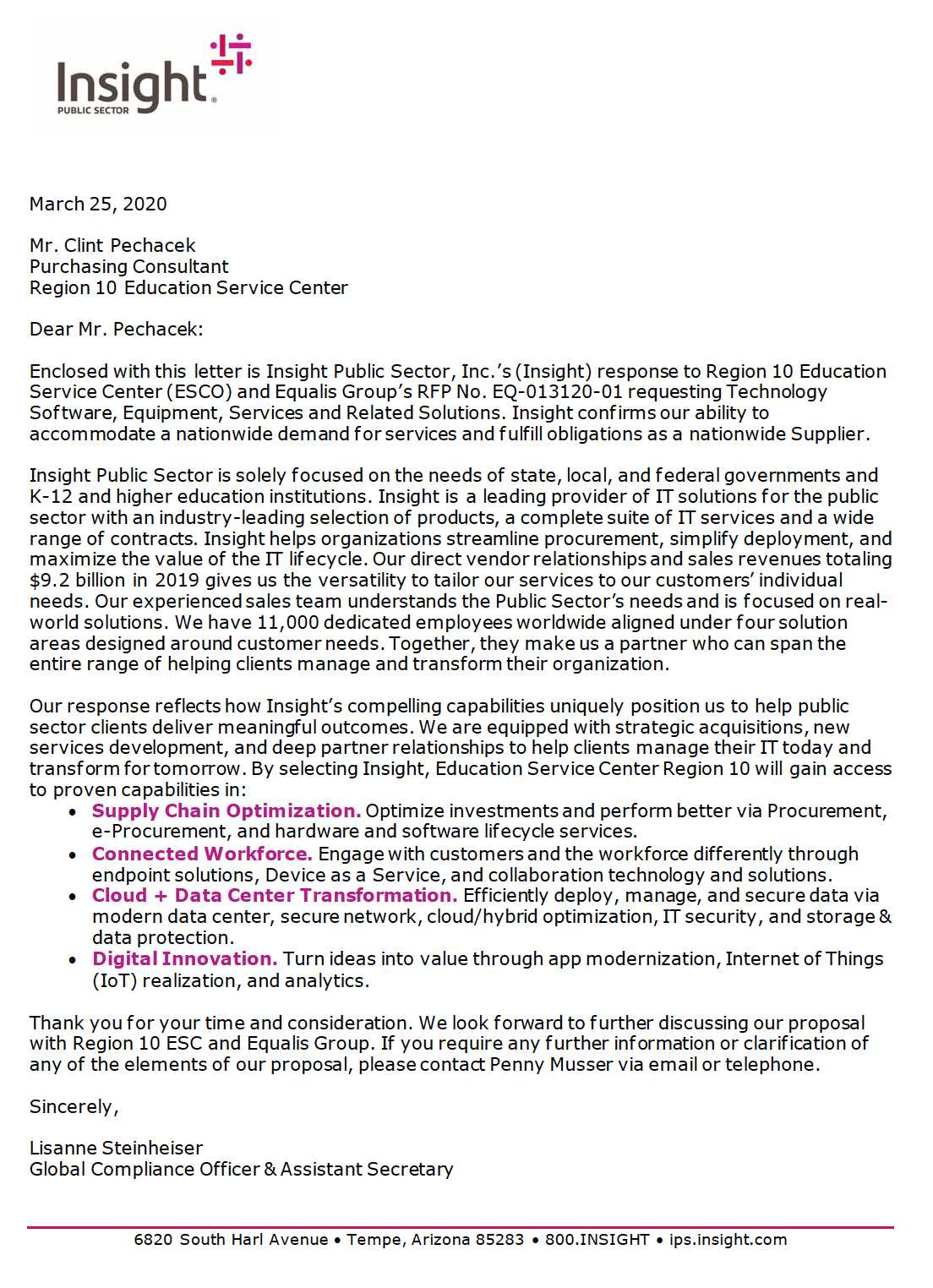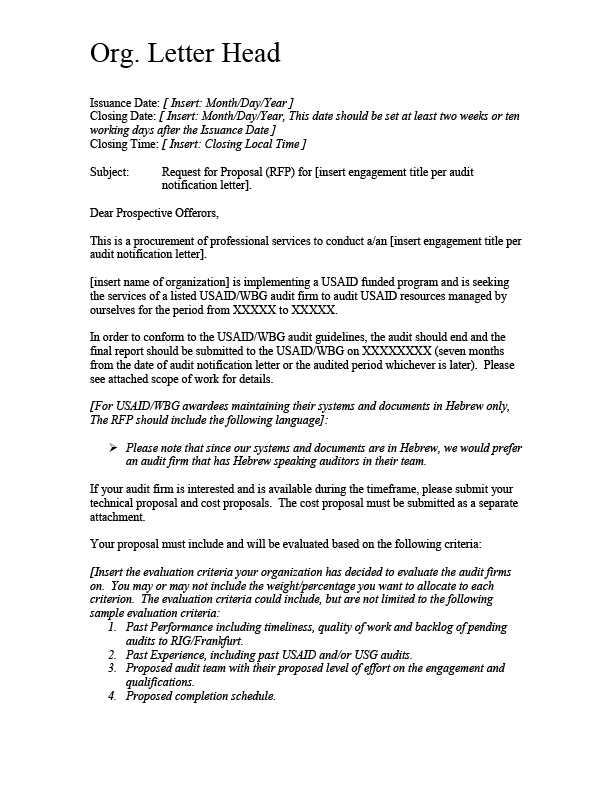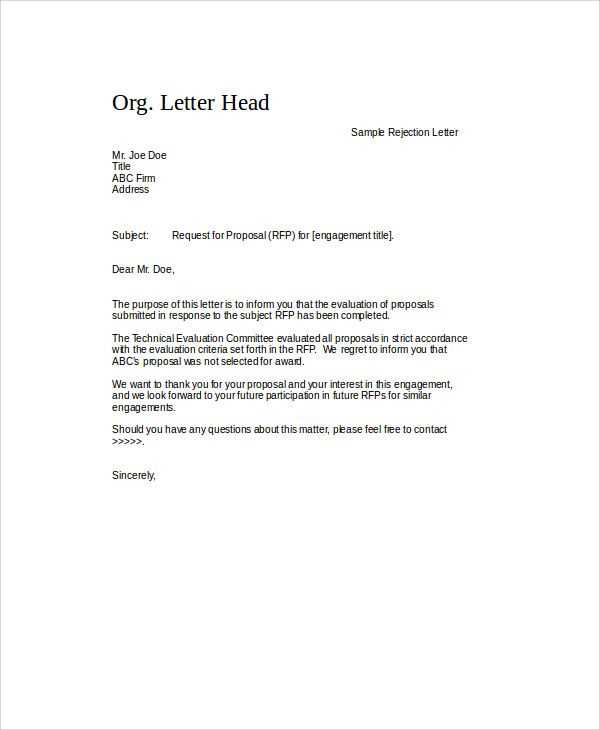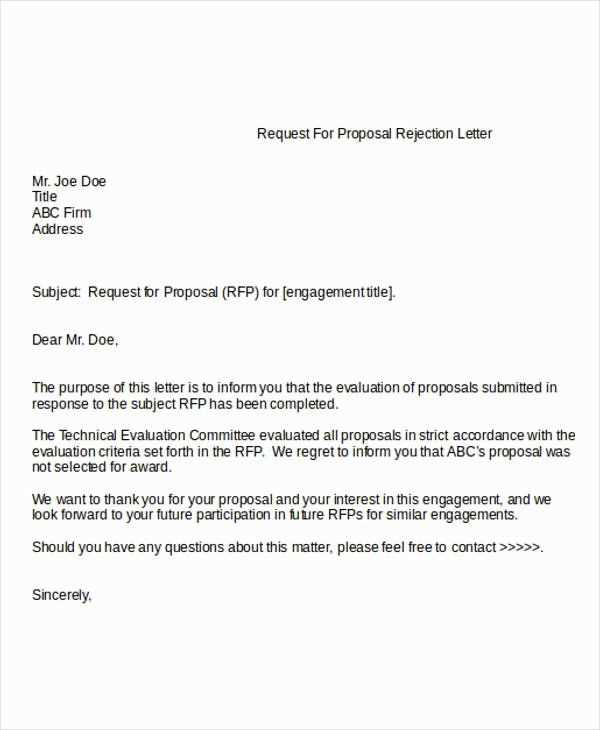Cover Letter for RFP Response Template Guide

When submitting a business proposal, the first impression often comes from the introductory document that accompanies the main proposal. This essential section serves to introduce your organization and outline the key points of your offer. A well-crafted introduction can set the stage for a successful partnership by highlighting your strengths and establishing credibility with potential clients.
It is crucial to ensure that this section clearly communicates your understanding of the client’s needs while showcasing how your solution can address those needs effectively. A professional and tailored approach can make a significant difference in how your offer is perceived, positioning you as a reliable and capable partner.
In this guide, we will explore how to create a compelling introductory document that grabs attention, communicates your expertise, and increases your chances of success. By focusing on structure, tone, and key elements, you can craft an introduction that resonates with potential clients and makes a lasting impact.
Key Elements of an RFP Cover Letter
The introductory document that accompanies your proposal should include several essential components to ensure that it serves its purpose effectively. These elements help you to communicate your message clearly and engage the recipient from the start, setting the tone for the rest of your submission.
First, addressing the recipient properly is crucial. Ensure that the document is addressed to the correct individual or organization and that it reflects an understanding of their needs. A personalized greeting demonstrates your attention to detail and professionalism.
Clearly stating your intent is another key element. Begin by succinctly outlining the purpose of your submission. This helps the reader understand right away why they are receiving the document and what action you expect them to take.
Highlighting your qualifications is equally important. Briefly mention why your organization is uniquely qualified to fulfill the needs outlined in the project or request. This section should build confidence in your abilities and set you apart from other candidates.
Expressing enthusiasm and interest is vital for demonstrating your commitment. Conveying a genuine interest in the opportunity can foster a sense of partnership, making it clear that you are eager to collaborate and offer value.
How to Customize Your Cover Letter
Personalization is a key factor in making your introduction stand out. A generic submission is less likely to capture attention or demonstrate your genuine interest in the opportunity. Customizing your introduction ensures that you address the specific needs and priorities of the recipient, making your proposal more relevant and appealing.
To effectively tailor your introduction, follow these steps:
- Research the client: Understand the organization’s goals, challenges, and values. Use this knowledge to align your message with their specific needs.
- Address their pain points: Identify the challenges they are facing and demonstrate how your solution can help overcome them.
- Highlight relevant experience: Share specific examples from your past work that directly relate to the project at hand. This shows your expertise and ability to deliver results.
- Use a personalized tone: Adjust the tone of your introduction to match the client’s culture. If they are formal, keep your language professional; if they are more casual, a friendly yet professional tone works best.
- Express genuine enthusiasm: Show that you are excited about the potential collaboration and that your team is fully committed to meeting their needs.
By following these steps, you can create an introduction that is not only personalized but also impactful, increasing your chances of a successful proposal submission.
Common Mistakes to Avoid in RFP Responses
When crafting an introductory document for a proposal, it’s important to avoid certain missteps that could negatively impact the effectiveness of your submission. These errors can undermine your message, make your submission less compelling, or even result in it being overlooked. Paying attention to the details and avoiding common mistakes will help ensure that your document resonates with the recipient.
Lack of Personalization
One of the most common mistakes is sending a generic introduction that doesn’t reflect the specific needs of the client. Tailoring your document to address the recipient’s particular challenges or objectives is crucial for establishing relevance and demonstrating that you have put in the effort to understand their goals.
Unclear or Vague Messaging

A proposal that lacks clarity or includes vague statements will fail to grab attention. Be concise and specific in your messaging, clearly communicating what you are offering and how it aligns with the recipient’s needs.
| Mistake | Consequences | How to Avoid |
|---|---|---|
| Generic Approach | Loss of interest, looks unprofessional | Research the client, customize the content |
| Lack of Focus | Confusion, unclear value proposition | Clearly define your offer and its benefits |
| Overly Complex Language | May confuse the reader, detract from message | Use simple, clear language that is easy to understand |
| Failure to Proofread | Spelling errors, grammatical issues that reduce credibility | Proofread carefully before submitting |
By avoiding these common mistakes, you can enhance the quality of your proposal and increase its chances of success. Focus on clarity, relevance, and professionalism in order to leave a positive impression.
Importance of Tone in Proposal Letters
The tone you use in your introduction is a crucial factor in determining how your message will be received by the recipient. It plays a significant role in setting the atmosphere for your entire proposal and can influence how your professionalism and intentions are perceived. A well-chosen tone helps build rapport and demonstrates that you understand the needs and expectations of your potential client.
Professionalism vs. Friendliness
Striking the right balance between being formal and approachable is essential. If the tone is too formal, it may come across as distant or impersonal, while an overly casual tone could undermine your professionalism. The key is to adjust the tone according to the client’s culture, ensuring that you appear both competent and friendly.
Building Trust and Confidence
The tone you select also helps to build trust with your audience. A confident, yet respectful tone reassures the client that you understand their goals and have the expertise to meet them. A positive, enthusiastic tone can convey your eagerness to collaborate and your commitment to delivering value, which can be persuasive in gaining their interest.
Best Practices for Structuring Your Letter
Organizing your introduction effectively is essential for ensuring that your message is clear, concise, and impactful. A well-structured document allows the recipient to quickly grasp the key points and understand the value you offer. Following a logical flow will help maintain the reader’s attention and highlight the most important elements of your submission.
Start with a brief introduction that clearly states the purpose of the document and why it is being submitted. This should immediately engage the reader and provide context for the proposal. Next, include a section that outlines your qualifications and explains why your organization is the right fit for the opportunity. Be specific about your relevant experience and successes to build credibility.
Finally, conclude with a polite and confident closing that reinforces your interest in the project and invites further discussion. A well-rounded structure creates a professional tone and ensures that the recipient understands both your proposal and your eagerness to collaborate on the project.
Tips for Engaging Proposal Reviewers

Capturing the attention of the individuals evaluating your proposal is essential for increasing your chances of success. A well-crafted introduction can make a significant difference in how your submission is perceived. It’s important to not only present your qualifications but also engage the reviewers in a way that makes them interested in your solution.
Be Clear and Concise

Reviewers often have limited time to evaluate numerous submissions, so clarity is key. Avoid unnecessary jargon and lengthy explanations. Focus on the most important points and communicate them in a straightforward manner.
- State the purpose of your submission early on.
- Highlight your relevant experience and skills concisely.
- Ensure each paragraph serves a clear purpose in your overall message.
Make It Relevant to the Client’s Needs
Show that you understand the client’s requirements and challenges. Align your proposal with their goals, and demonstrate how your solution will address their specific needs.
- Research the client’s objectives and tailor your content accordingly.
- Use examples or case studies that reflect the challenges they face.
- Highlight the benefits your solution brings to them directly.
By following these tips, you can ensure that your proposal stands out and maintains the attention of the reviewer throughout the evaluation process.